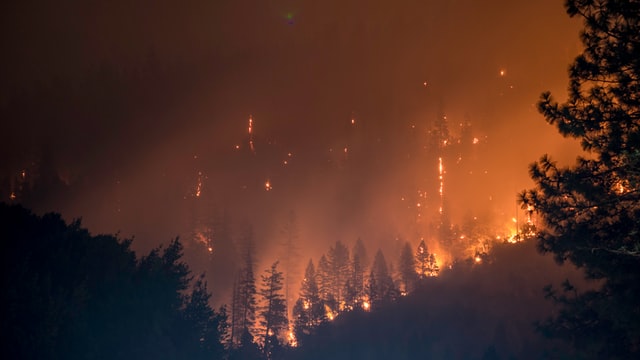Trust & Chance: 2 Things You Need for Leading in a Crisis
Leading in a crisis presents an entirely new scope of challenges, and leaders of all kinds need to be prepared. I have given many workshops and keynotes in the past year where I relate my leadership experiences from the army and responding to disasters.
Leading in a crisis
There is one question that comes up at the end of almost every one of the bookings: How do you lead people during emergencies when they are scattered all over the place, and you have no idea what is going on?
The short answer? Trust and chance.
In 2011 there was a wildfire that tore across the bush in northern Alberta that forced the evacuation of 17,000 people. By the end, over 500 homes were destroyed, 300 of which were in the town of Slave Lake.
During the days of the main destruction I had a dozen teams of employees and volunteers that were deploying to the affected area to support the evacuation of all of these people.
The geography covered thousands of square kilometres of northern forest that covered most of northwest Alberta. Roads were closed and cell-phone coverage, spotty at the best of times, was down due to the raging fires. My people were driving into this maelstrom to deliver humanitarian services.
(For more on leading through fires, floods, earthquakes, COVID, and more, read this post next.)
In this day and age of instantaneous broadband and high-speed communications, I was utterly in the dark for most of the beginning days of the operations. My biggest fear was that my people were driving into the fires. My only instruction to those I could get a hold of was this: No one gets killed.
Chance was on my side, and no one on my team was hurt. In fact, there wasn’t a single fire-related casualty out of all of those people forced from their homes.
Trust was on my side, because of the work we had done to build our teams. I knew that these people would do the best job they could and knew that I had their back as they made decisions and took actions in the field.
(Leading in a crisis often feels like you’re trying to move forward without a map. Here are four ways to still make progress.)
How to build trust when leading in a crisis and beyond
There is little you can do to control chance. But there is everything you can do to build trust.
Here is the top three:
- TRAIN your people well and in challenging situations. Military leaders have learned repetitive training builds muscle and memory triggers that win out over panic when emergencies take place.
- NEVER, ever, discipline someone for making a decision; even if it is one you wouldn’t have made. Remember, they were there, and you weren’t. That said, when things have calmed down it is fair to review the actions taken with a coach’s or mentor’s eye around what lessons could be gained from that experience.
- TALK to your people in calm tones. Imagine they are in front of you; imagine putting your hand on their shoulder and talking them through a scary complex situation.
Additional leadership resources
Do you want to talk more about leading in a crisis and beyond? My services include organizational consulting as well as one-on-one coaching for new or uncertain leaders who need help finding their way forward. Let me know about the kind of results you want, and we’ll schedule a call to figure out the best way to get you there.
Looking for more leadership content? Try one of these three posts next:
- What’s love got to do, got to do with it? – Is There a Place for Love in Leadership?
- 14 Secret Habits That Will Make You A More Effective Leader
- LEADING THROUGH SCARY TIMES
This article was first published in 2015 but it was updated in 2021 just for you.
